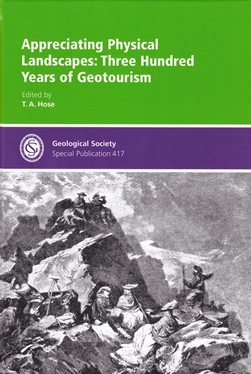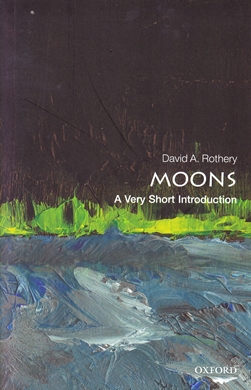 Nautilus – beautiful survivor
Nautilus – beautiful survivor
Wolfgang Grulke, an author and collector based in Dorset (see Cabinet of curiosities, Geoscientist 24.9 October 2014) has already delighted us with his beautiful book Heteromorph: The rarest fossil ammonites – Nature at its most bizarre, which appeared with the Society’s imprimatur and received a glowing review in these pages from Professor Chris Wilson in 2015. He has now repeated the trick with this, no less stunning coffee-table-format book on Nautilus and the nautiloids.
Also bearing the endorsement of the Society and with an introduction by Professor Peter Ward (University of Washington, Seattle), this loving tribute to Nautilus and its long family tree (whose complexities are helpfully set out in a fold-out diagram for easy reference while reading) is the ideal Christmas gift for the fossilist in your life.
Well spaced between ravishing colour photographs, Grulke’s easy-going text takes the reader through the taxonomy of the cephalopods, the history of scientific awareness and investigation of the famous ‘living fossil’, to a survey of today’s extant genera and species - their cultural and artistic importance worldwide, as well as some fascinating ‘freak’ pathological specimens. Grulke then guides us expertly through half a billion years of the group’s evolution and fossilization, via a series of ‘visual galleries’ showing typical examples from the stratigraphic record.
As a collector, Grulke is not at all disdainful of the importance of the Nautilus to art and design, and he devotes an entire chapter to the different ways in which these beguiling shells have become incorporated or converted into beautiful works of art.
The author’s passion for Nautilus, both as living thing and as object, comes out most clearly in the final two chapters, with a series of anecdotes detailing his own personal involvement with Nautilus as a diver, collector and as author of this book; while he concludes by asking the question – is Nautilus thriving, or on the brink of extinction? Opinion, it seems, is that divided! Grulke, as a sought-after business consultant in his other life, has some interesting insights to impart into what ‘scarcity’ really means, and how it relates to market price.
Accessible, quirky, and above all a labour of love, written with the cooperation of a vast array of scientific experts, Nautilus – beautiful survivor is a superb achievement and represents truly astounding value at £38.00.
Reviewed by Ted Nield
NAUTILUS: BEAUTIFUL SURVIVOR. 500 MILLION YEARS OF EVOLUTION by WOLFGANG GRULKE. Published by: @one Press, 2016. ISBN: 978-0-9929740-3-9 (Classic Edn). List Price: £38.00, 224pp, hbk. W: www.geolsoc.org.uk/mpbnu
 Appreciating Physical Landscapes
Appreciating Physical Landscapes
This is a history book, not a geological tourist guide. 'Geotourism' is the study of travel to enjoy and, importantly, to understand scenery. With its origins in the C17th Grand Tour, geotourism was expanded by antiquarian's observations in the C18th and further developed in the C19th as the interest in geology blossomed. The Romantic Movement saw wild landscapes used by the increasing urban population as a source of recreation. Modern geodiversity tourism is the legacy.
Based on an international conference of the History of Geology Group, an introductory paper sets the scene and defines this special interest form of travel with examples from around the world; including definitions of 'casual' and 'dedicated' recreational geologists. The remaining papers are case history studies.
In C18th Scotland Geology, tourism and landscape aesthetics all developed together, obtaining wider appeal with Cook's tours to the classic locations from Scott's novels and culminating in the modern Geopark. Waterfalls have a long history of aesthetic appreciation, but conflicts with navigation improvements or extraction of energy can diminish their cultural value. The Haarlem school of geomorphologically accurate landscape painters owes its origins to the coastal dune system of Holland. Similarly, von Guérard was a strong believer in painting geologically informed landscapes, which he did in Europe and Australia.
Other case histories encompass Norwegian and central European mountains, Alpine river gorges, Danube valley loess in Serbia and the first known scientific descriptions of travels in Southwest England. Three papers consider the roles of: natural science societies in the Welsh borders; early photography on Geologists' Association expeditions; and mapping in the depiction and understanding of the landscape of the Peak District.
A benefit of historical, informed accounts (as cited by several authors) is to provide data for modern studies. For example, climate change effects on glacial volume and length; information on now-flooded gorges from times before reliable maps; or the removal of speleothems from caves. This information may reside in other countries. The mining methods at the Carclaze tin mine in Cornwall are published in France, but not England, having been obtained on behalf of the French Government by 'spies' posing as geotourists in 1765.
Unfortunately, the book is let down by the poor reproduction of historic and modern photographs. They comprise a series of muddy mid-tones and it would have been so easy to stretch the contrast and provide improved visibility for the reader.
Reviewed by Kevin Privett
APPRECIATING PHYSICAL LANDSCAPES: THREE HUNDRED YEARS OF GEOTOURISM, by HOSE TA (Ed): 2016 Geological Society Special Publication #417. 248pp hbk. List Price: £100. Fellows’ Price: £50.00 W: www.geolsoc.org.uk/SP417.
.jpg?h=251&w=252&la=en) Volcano Discoveries - A Photographic Journey around the World
Volcano Discoveries - A Photographic Journey around the World
Since 1995 volcanologist Dr Tom Pfeiffer has been a photographer and tour guide, visiting some of the world's most spectacular active volcanoes, defined as those having erupted within the past 10,000 years. This book, compiled by volcanologist Dr Ingrid Smet, presents a personal record of Tom's travels over the years. There are something like 220 pages packed with stunning photographs, most of which were taken by Tom.
A narrative accompanies each volcano, comprising a description of the history and setting and the various features witnessed, together with relevant brief notes on the local mythologies. Personal anecdotes strike just the right balance; giving a human touch to the stories and allowing the reader to share in some small way in Tom's travels, but without being a travelogue or diary.
The book is aimed at all people with a fascination for volcanoes and opens with a non-technical description of volcanoes. A glossary of terms and an index of locations are included. The authors' stated aim is not to produce an encyclopaedia of the world's volcanoes, but to explore selected volcano 'portraits' and in this the book succeeds.
All the volcanoes are accessible, through some more readily than others, and for those considering a volcano-watching vacation there is plenty of inspiration. The main section of the book starts with Europe; Iceland (3 volcanoes), Italy (4) and Greece (3). This is followed by four from the African Rift Valley and three oceanic hotpots (two in the Canaries and one in Hawaii). There are 12 examples of explosive volcanism from the Pacific 'Rim of Fire' (six in Central America, three in New Zealand, two in Vanuatu and one in Japan). The final section 'Living with Volcanoes' looks at eight in densely populated Indonesia.
Roman and Greek mythology abounds with stories of gods and defeated giants buried beneath volcanoes around the Mediterranean. However, it is interesting to read that the 1st Century philosopher Apollonius of Tyana observed: "there are many other mountains all over the earth that are on fire - we should never be done with it if we assigned to them giants and gods like Hephaestus" [the Greek equivalent of Vulcanus, god of blacksmiths, who forged the bindings that held Prometheus to his rock under Zeus's punishment for stealing fire from the Gods and giving it to Man].
The images in this book demonstrate why ancient, and even some modern people, have invoked supernatural explanations. Even though Apollonius's doubts have been confirmed by modern concepts of plate tectonics and the like, these images are still magical.
Reviewed by Kevin Privett
VOLCANO DISCOVERIES - A PHOTOGRAPHIC JOURNEY AROUND THE WORLD, by TOM PFEIFFER & INGRID SMET, 2015. Published by: Reed New Holland Publishers Pty Ltd. 240pp (hbk) ISBN: 9781921517358 List Price: £16.99. W: http://uk.newhollandpublishers.com/volcano-discoveries-1350.html.
 Cave - Nature and Culture
Cave - Nature and Culture
As an engineering geologist, I am often asked about caves: Why is this cave here? What is it made of? Where have my drilling rods gone? Aside from consideration as a geohazard, caves are surely the ultimate rock outcrop, and the lure of observing pristine in situ structure, mineralisation and amusingly shaped speleothems is usually enough for me to temporarily overcome my fear of not being able to see the sky for a substantial period of time. For whatever reason, there is an overpowering urge, upon encountering a cave, to have a look in it.
Cave exploration has provided us with many discoveries, described in this book, most notably about our own ancient ancestors. In fact, as the book points out, the very definition of a cave: “a natural void…large enough to admit humans”, is related to its human interactions. The adventures of cavers who have pushed the boundaries of cave study make fascinating reading.
The book depicts expeditions into massive caves, described as ‘Mount Everest in reverse’, taking a week to get to the site of exploration, 7-10 days to explore and then a week to get back out again. These are driven by the human need for adventure: ‘There’s not many places on the planet you could say you were the first person to actually go’.
The poetic language of the book conjures this dark and mysterious subterranean world for the reader’s consideration; a bizarre world like no other, for ‘every map or model we have of a cave is a pictorial reconstruction of a place that one can only actually see and experience in fragments’. And presumably, only then if you are intrepid enough to risk it.
‘Cave’ is written by two academics whose speciality is in English, and in particular the intersection of literature and geography, and it therefore naturally focuses on literature and language aspects in the history of cave sciences, caving, cave art, and cave terminology. It describes specially adapted cave creatures and provides a comprehensive discussion of all the caves ever mentioned in literature, from Jules Verne to Enid Blyton.
The book presents much food for thought, and left me pondering the subject for several days. Surely, the mark of a ‘Good Read’.
Reviewed by Catherine Kenny
CAVE: NATURE AND CULTURE by Ralph Crane and Lisa Fletcher, 2015. Published by: Reaktion Books Ltd 224pp ISBN: 978-1-78023-431-1 List Price: £14.95. W: www.reaktionbooks.co.uk
 Moons - a very short introduction
Moons - a very short introduction
This small, densely packed paperback is a fantastic starting point for those interested in learning more about the 190 or so moons found within our solar system. Not merely a book of tables and facts about these celestial bodies, Moons covers the rich history of exploration and discovery along with the ideas that were shaped and moulded by astronomers across the ages.
From the discovery of Jupiter’s moons by Galileo to the moons of smaller bodies being discovered today, the text is interspersed with some excellent figures and simple tables that help to demonstrate the points being made, to illustrate some of the more complex ideas such as tides, and of course to allow us to see these alien worlds.
There is a large amount of information on the Earth’s Moon which is to be expected as it is the most intensely studied and our closest neighbour. Of particular interest are the structure and composition of The Moon, craters, and its origins; a topic that is still being hotly debated amongst scientists today.
The most wonderful aspect of this book is how Rothery has pre-empted almost every question that you could possibly think of (and answered them), giving the text a really natural flow from point to point. He is quick to dispel myths such as 'Super Moons' and the Moon’s effect on human behaviour; but discusses in depth the effects it has on tides and marine life.
Aside from our Moon, the regular satellites of the giant planets are given a very thorough discussion from the tantalising prospect of life on worlds such as Europa to unexpected active volcanoes on Io. Covering the various missions by space probes to visit these worlds, Rothery gives an excellent overview of these mysterious places and the physical processes that govern them. He also sprinkles plenty of tantalising hypotheses about potential life as well as future missions of interest such as ‘chipsats’ on Europa and submersibles on Titan.
The other running theme in this book is the attention to detail given with respect to nomenclature of moons, asteroids and other bodies. This is something I have rarely seen done in other books and it is done well here.
Finally the book has an excellent further reading list, as well as an online resources section which contains animations, online courses and video lectures for you to explore.
Reviewed by Jonathan Scafidi
MOONS: A VERY SHORT INTRODUCTION by DAVID A ROTHERY, 2015. Published by: Oxford University Press 176pp (pbk) ISBN: 9780198735274 List Price: £7.99. W: www.oup.com
 Planet Earth in Deep Time
Planet Earth in Deep Time
This book is a result of a UNESCO/IUGS project on climate change and biodiversity in the mid-Palaeozoic (IGCP Project 596). The first thing that strikes you about the book is the high quality to which it has been reproduced.
There is a brief introduction to the rationale behind the project and a systematic review of the fossil groups, followed by an introduction to the key areas of Mid-Palaeozoic sedimentary occurrences worldwide. The project entailed a large-scale taxonomic, stratigraphic and palaeoecological study of mid-Palaeozoic floras and faunas. This has been marvellously condensed into 86 contributions detailing the scope of the project in the individual countries. These contributions detail representative geological sections or regions and the variety of locations covered can only be described as breath-taking!
I was initially unsure how the book would work, having as it does translations of the IGCP project 596 project summary interspersed among the descriptions of the localities, in a number of different languages. This does not however affect the readability of the text. Indeed I find part of this book’s appeal is that it has been developed for a wide ranging audience, with descriptions of localities and regions in both the native language and English. The book oozes quality from every page. It is a book that can be read at leisure and that will leave the reader wanting to find out more about the localities detailed. I suspect that one of the most difficult jobs for the editors was coming up with a shortlist of localities – they are all of such high quality.
The authors ‘intend to enhance the visibility and the perception of research on mid-Palaeozoic deposits beyond the Earth Science community’ – and they have managed to do this with aplomb. The book is accessible to the interested layperson and is very much a book that could be picked up and understood by someone with a basic level of geological understanding. The quality of the images of the locations is superb and the addition of a palaeogeographic map for each location/region helps the reader to build a picture of the mid-Palaeozoic world. Even more appealing are the artistic reconstructions, characterising the biosphere of the Devonian and Carboniferous – these are quite simply stunning and I would venture to say are worth the purchase price of the book alone.
Quite simply this is an amazing book, suitable for anyone with an interest in the development of our planet – I cannot recommend it highly enough.
Reviewed by Gordon Neighbour
PLANET EARTH - IN DEEP TIME (PALAEOZOIC SERIES - DEVONIAN & CARBONIFEROUS) by T J Suttner, E Kido, P Königshof, J A Waters, L Davis, and F Messner (Eds). ISBN: 978-3-510-65335-5 Publisher: Schweizerbart Science Publishers W: www.schweizerbart.com RRP: €49.90